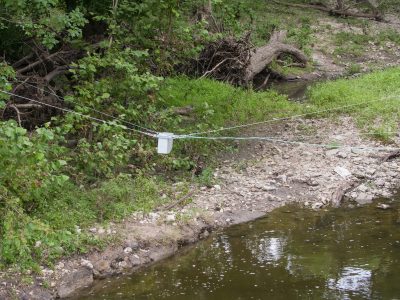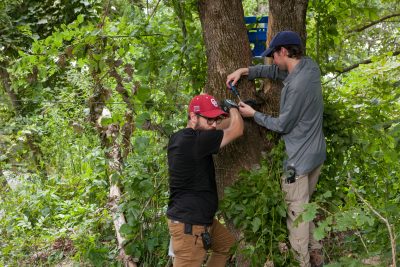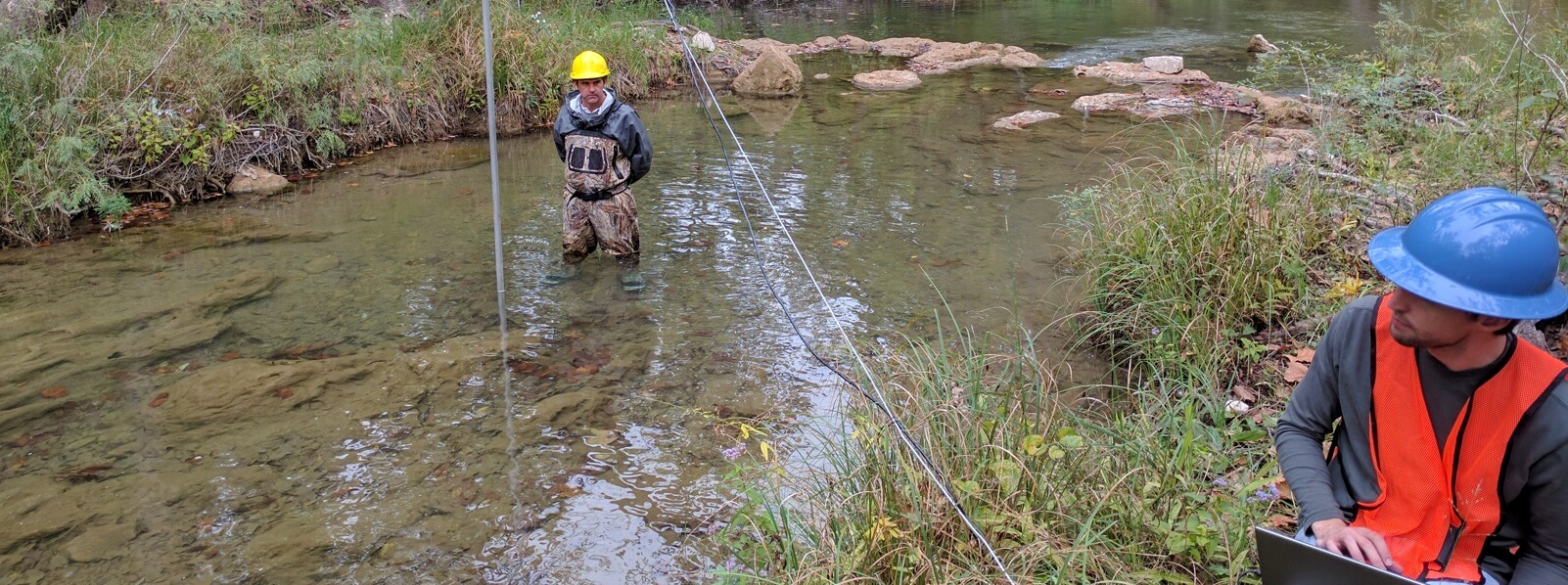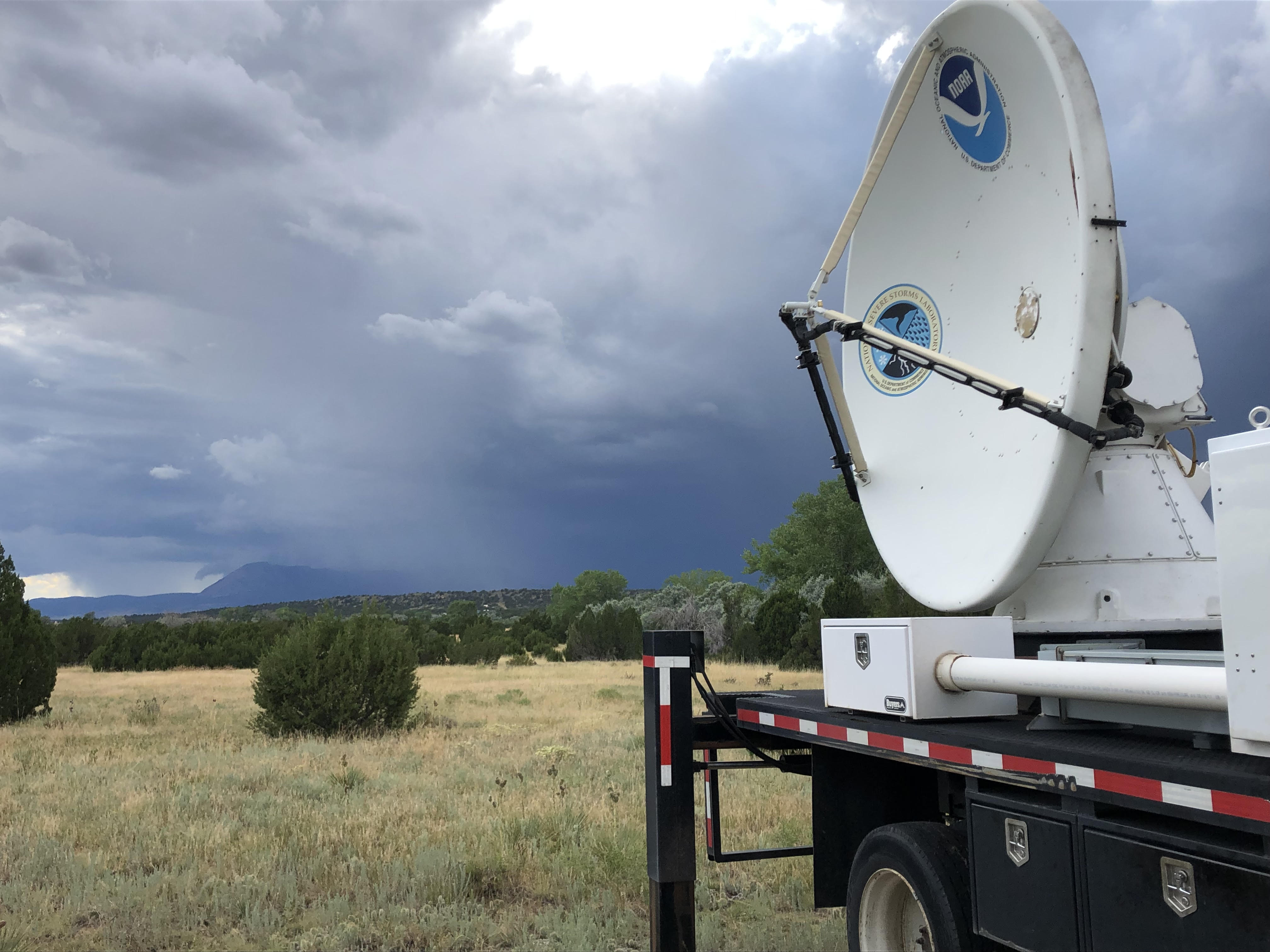A new research project is already helping save lives and property with early flood notification after a stream in southern Oklahoma rose 10 feet in one hour.
Jonathan J Gourley, research hydrologist with the NOAA National Severe Storms Laboratory, said the project will demonstrate the use of remote-sensing technology for better flood detection and improve downstream predictions by models. Researchers will deploy 14 stream radars throughout the United States that utilize remote sensing to measure the speed, depth, and flow rates in streams.

NSSL is leading several remote sensing in streams projects, known as Automated NonContact Hydrologic Observations in Rivers, or ANCHOR, with funding from NOAA’s Joint Technology Transfer Initiative. This part of the project is with The University of Oklahoma Cooperative Institute for Mesoscale Meteorological Studies and the project principal investigator Danny Wasielewski, an electronics engineer with OU CIMMS.
Walking through patches of poison ivy and trudging through deep mud, the research team installed the project’s second radar above a creek near Mill Creek, Oklahoma, in late July. It will monitor the stream’s water speed and depth, along with how quickly the water may rise during a hazardous weather event, and notify researchers and local stakeholders of the observed changes.
The first stream radar was deployed in April in Falls Creek near Davis, Oklahoma, and near Falls Creek camp, an area that has more than 55,000 visitors participating in youth camps and conferences each summer. As many as 7,500 campers may be downstream at any moment.
Within a few weeks, the Falls Creek installation provided useful data to the ANCHOR team.
The radar was in place taking measurements as the water transformed from a trickling stream to a raging river on May 19. Gourley received a notification indicating flash flood conditions, triggered by a sudden increase in the stream’s water flow. He cross-checked the project information with NSSL’s Flash Flood Forecast System and concluded flash flood conditions were occurring.
Based on this information, he notified Falls Creek officials, advising them to take precautions. One hour after the notification the river rose 10 feet. Fortunately, no visitors were at camp that week.
“The sensor provided real time information and text alerts were issued indicating an impending threat,” he said.
The event itself was rare, and measuring it was even more unprecedented.
“Capturing an event of this magnitude just a matter of weeks after we installed the instrument is very rare, equivalent to finding a needle in a haystack,” Gourley said.
The increase in velocity indicated by the radar was a major insight in itself. The stream’s velocity increased an hour before the depth began to rise, providing additional time to respond to an impending flash flood.
“When we later went out, we saw the radar was damaged from debris flowing down river during the event created by a loss of soil composition,” Gourley said. “A tree fell on top of one radar cable and tore it from the mount, but it continued to operate.”
Deploying radars to measure water height, in combination with text alerts and notifications may impact water resource management practices and help save more lives from the number one severe weather killer – flooding.
The system being demonstrated for operational use during the two-year JTTI-funded project may offer a more cost-effective and accurate solution for estimating streamflow and flooding conditions than what is currently being used in the United States. Gourley said conventional gauging can be costly and the amount of conventional gauges used is generally going down because of the time and resources required.
ANCHOR’s team continues scouting for new radar installment locations. Installations will take place through 2017 with results expected in early- to mid-2018.






